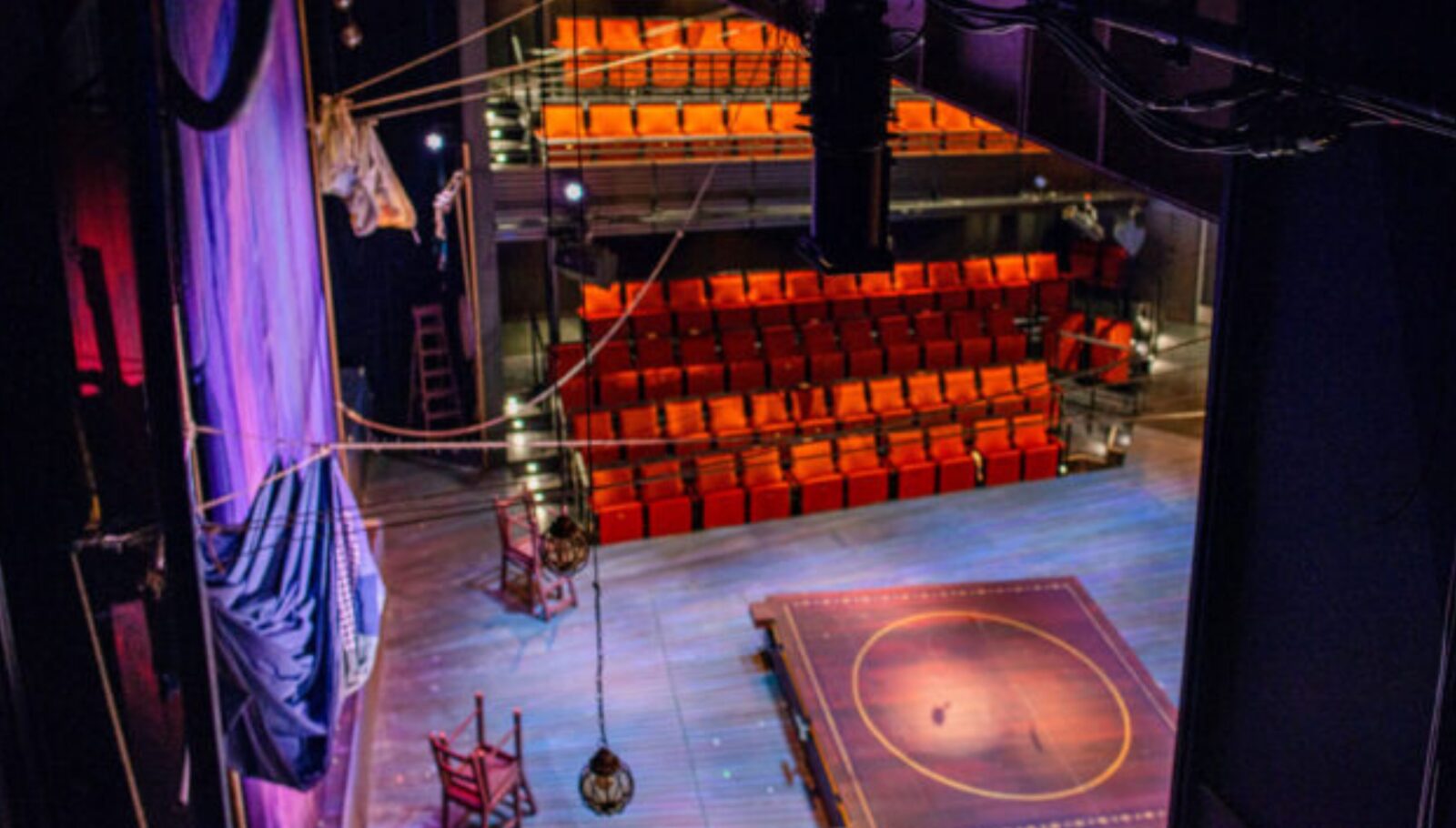Elena Giakoumaki: The Future of Theatre Design

This episode of the StageLync Podcast is part of our World Stage Design series. Host Anna Robb interviews Elena Giakoumaki, an international theatre consultant and architect with over 15 years of experience designing performance spaces around the world. Elena reflects on her journey from set design in Athens to her current role at Charcoalblue, where she has shaped projects like Soho Place in London and Chicago Shakespeare Theater. In this conversation, she unpacks how evolving audience expectations, immersive technology, and sustainability are transforming the way we conceive, build, and experience theatres. Check out this preview, and don’t miss the full episode next week!
How are audience expectations reshaping theatre spaces today?
Elena Giakoumaki:
Theatre is no longer about passive observation—it’s an immersive, end-to-end experience. Audiences today expect a holistic journey that starts the moment they book a ticket and continues even after the performance ends. This demand has shifted theatre design from rigid, fixed formats to experience-led architecture. Theatres are now “experience spaces,” responding to both technological advancements and societal behaviors. Just as 1960s theatres responded to Victorian models, we’re now designing a new generation of theatres that reject the old norms and embrace flexibility, technology, and audience interactivity.
What are the current trends in theatre architecture, especially regarding adaptability and sustainability?
Elena Giakoumaki:
Adaptability is crucial—venues need to accommodate evolving artistic forms and technologies. We often ask: will it even be called a “theatre” in 20 years? Flexibility in use is more important than ever. Just as important is sustainability: modern theatre buildings are now expected to last over 100 years, not 15 as they once did. So, we design with dismantlability and longevity in mind. Spaces must be reconfigurable and modular to evolve with artistic needs while minimizing environmental and financial costs. Good theatres now are built for the unknown—spaces designed today must still serve purpose decades from now.
How is technology influencing theatre design, and how do you plan for such a fast-evolving landscape?
Elena Giakoumaki:
Contrary to popular belief, technology in theatre is getting bigger, not smaller. While individual devices shrink, the amount of equipment, data, and interactivity grows exponentially. It’s no longer just one projector—it might be 100. Designers now focus on robust fundamentals: floors and ceilings with high load capacity, acoustic isolation, and vast power access. The interior design philosophy is: build for disassembly. The goal is to allow future redesigns without having to alter the structural shell. With immersive tech and media integration becoming the norm, theatres must be inherently adaptable, allowing infrastructure to change without architectural upheaval.
What role does culture play in how you design theatres across different regions?
Elena Giakoumaki:
Designing theatre across cultures is like learning new languages—you have to unlearn what you think you know and approach each project with humility and openness. While the essence of theatre—intimacy, audience unity, and live experience—is universal, how it’s realized differs by region. Working internationally broadens your perspective and enhances your ability to collaborate. Exposure to different approaches makes you more receptive and flexible, which is vital for designing inclusive and culturally responsive performance spaces. The more “languages” you learn, the more creative and empathetic your design process becomes.
What does immersive theatre look like in the UK, and how is it influencing the market?
Elena Giakoumaki:
Immersive theatre is booming globally, and the UK is no exception. A prime example is ABBA Voyage, a cutting-edge show that blends live elements, projection, and “layered reality” in a purpose-built arena. It’s more than a show—it’s a destination, complete with F&B offerings, interactive zones, and its own ecosystem. This reflects a larger trend: audiences want more than a seat—they want experiences. Shows that integrate VIP zones, variable pricing, and holistic design—from arrival through the restrooms—are thriving. Theatres are now being designed not only for performance but as lifestyle hubs with strong front-of-house and commercial considerations.
Key Insights from the Podcast
Editor's Note: At StageLync, an international platform for the performing arts, we celebrate the diversity of our writers' backgrounds. We recognize and support their choice to use either American or British English in their articles, respecting their individual preferences and origins. This policy allows us to embrace a wide range of linguistic expressions, enriching our content and reflecting the global nature of our community.
🎧 Join us on the StageLync Podcast for inspiring stories from the world of performing arts! Tune in to hear from the creative minds who bring magic to life, both onstage and behind the scenes. 🎙️ 👉 Listen now!
